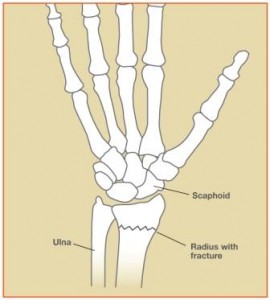 CHICAGO --- Wrist fractures have an important personal and public health impact and may play a role in the development of disability in older people, according to a Northwestern University study published by the British Medical Journal. Beatrice Edwards, M.D., associate professor of geriatrics at Northwestern University Feinberg School of Medicine, was the lead author of the study.
CHICAGO --- Wrist fractures have an important personal and public health impact and may play a role in the development of disability in older people, according to a Northwestern University study published by the British Medical Journal. Beatrice Edwards, M.D., associate professor of geriatrics at Northwestern University Feinberg School of Medicine, was the lead author of the study.
Wrist fractures are the most common upper extremity fractures in older adults and can affect everyday tasks like carrying heavy objects, opening doors, cutting food, pouring liquid, turning the key and getting out of a chair. But their precise impact on ability to carry out usual daily activities has not been well studied, until now.
Edwards and a team of researchers set out to quantify the clinical impact of wrist fractures in a group of older women.They identified 6,107 healthy women, aged 65 years and older, without prior wrist or hip fracture. Five activities of daily living were used as a measure of functional decline (meal preparation, heavy housekeeping, ability to climb 10 stairs, shopping and getting out of a car). Participants were examined approximately every two years for an average of 7.6 years.
During the study period, 268 women had a wrist fracture. These women were approximately 50 percent more likely to experience clinically important functional decline compared to women without a wrist fracture, even after accounting for demographic, health and lifestyle factors. In fact, the effect of a wrist fracture on functional decline was clinically as significant as other established risk factors such as falls, diabetes and arthritis.
"Our findings highlight the personal, public health and policy implications of wrist fractures," said Edwards, who is also the director of the bone health and osteoporosis program at Northwestern. They call for greater public health awareness of the impact of wrist fractures, including measures such as bone density screening and treatment of women with osteoporosis, to prevent wrist fractures and prompt rehabilitation after a wrist fracture to help improve recovery.
By Erin White. Contact her at ewhite@northwestern.edu

Comments